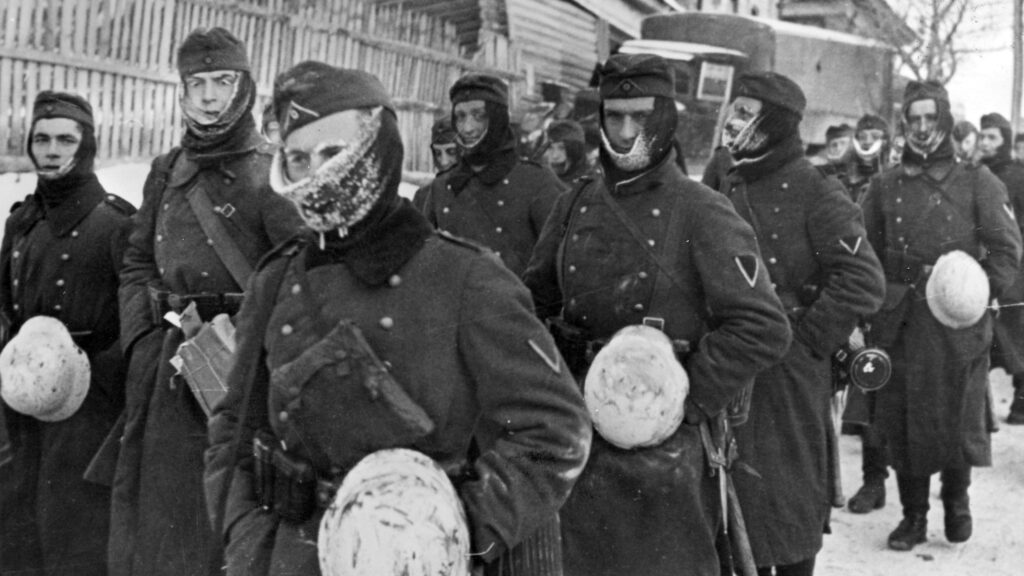Operation Barbarossa was Adolf Hitler’s ill-fated invasion of the Soviet Union during World War II. Launched on June 22, 1941, it aimed to secure Soviet territories, exploit resources, and eliminate the perceived threat to Nazi Germany. The operation initially saw swift German victories, with the Luftwaffe playing a crucial role. However, setbacks such as stretched supply lines and the Russian winter slowed the German advance. The turning point came in 1942 when the Soviets launched a counteroffensive, culminating in the Battle of Stalingrad. Operation Barbarossa exposed Germany’s limitations, shifted momentum in favor of the Allies, and highlighted the resilience of the Soviet Union.
Operation Barbarossa: Hitler’s Ill-Fated Invasion of the Soviet Union
Introduction
Operation Barbarossa, launched on June 22, 1941, was Adolf Hitler’s ambitious military campaign to invade the Soviet Union. It marked a major turning point in World War II and had far-reaching consequences for both Germany and the Soviet Union. This article aims to provide an in-depth analysis of the operation, its strategic objectives, the reasons for its failure, and the impact it had on the course of the war.
Objectives and Planning
The primary objective of Operation Barbarossa was to secure vast territories in the Soviet Union, exploit its resources, and eliminate the Soviet state as a perceived threat to Nazi Germany’s expansionist goals. Hitler believed that defeating the Soviet Union would cripple the Allies and open up opportunities for the creation of a greater German empire in Eastern Europe.
The planning for the invasion was meticulous and extensive. German military commanders developed multiple attack plans, accounting for various scenarios and factors such as the vast distances, weather conditions, and potential Soviet resistance. The operation involved the largest invasion force ever assembled, comprising of around three million German troops and their Axis allies.
The Initial Victories
When Operation Barbarossa was launched, the German forces caught the Soviet Union off guard, as Stalin had been confident in a non-aggression pact signed between the two nations. The German army swiftly advanced, occupying vast regions within weeks. By September 1941, the Nazis had encircled and captured nearly a million Soviet troops in huge pockets, dealing a significant blow to the Soviet military.
The Luftwaffe, the German Air Force, played a crucial role in the early successes of Operation Barbarossa. Their relentless bombing campaigns crippled Soviet airfields, reducing the Soviet capacity to counterattack. German panzer divisions pushed deep into Soviet territory, driving towards major cities like Moscow and Leningrad.
Setbacks and the Russian Winter
However, as the German forces advanced further into the Soviet Union, they encountered several setbacks. The vast distances, stretched supply lines, and lack of adequate resources began to hinder the German war machine. Moreover, the Soviet Union employed the scorched-earth policy, destroying infrastructure and resources as they retreated, denying the Germans valuable assets.
As winter approached, the German soldiers were ill-prepared for the extreme cold temperatures of the Russian winter. They lacked proper winter clothing and the necessary equipment to navigate the frozen terrain, whereas the Soviets were accustomed to such conditions. The harsh weather conditions and resilient Soviet resistance slowed down the German advance and created a stalemate in the frontlines.
The Turning Tide and Soviet Resurgence
In 1942, the Soviets launched a counteroffensive against the German army, marking a turning point in the war. The Battle of Stalingrad, which lasted from August 23, 1942, to February 2, 1943, became a symbol of Soviet resistance and resilience. The Soviet victory at Stalingrad inflicted heavy casualties on the German army and effectively halted their advance.
Brutal urban warfare and the encirclement of the German Sixth Army led to its complete annihilation. This marked the first significant defeat for the German military and demonstrated the Soviet Union’s ability to resist and eventually push back against the invaders. The tide was turning, and the Soviets began a long and grueling offensive that would eventually lead them to Berlin and the end of the war in Europe.
Legacy and Impact
Operation Barbarossa was a critical turning point in World War II. Hitler’s decision to invade the Soviet Union proved to be a costly mistake that ultimately led to Germany’s downfall. The Soviet Union’s ability to withstand and eventually repel the invasion was a significant blow to German morale and military capability. It shifted the momentum in favor of the Allies and exposed the vulnerability of the German war machine.
Furthermore, the invasion of the Soviet Union was characterized by numerous war crimes committed by the German troops. The Holocaust, as well as mass killings and widespread atrocities against civilians and prisoners of war, tarnished Germany’s reputation and further fueled Soviet determination to defeat the Nazis.
